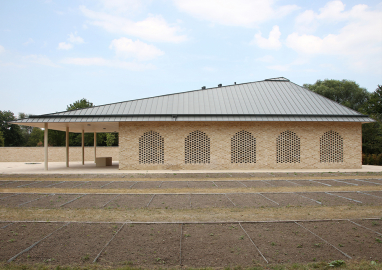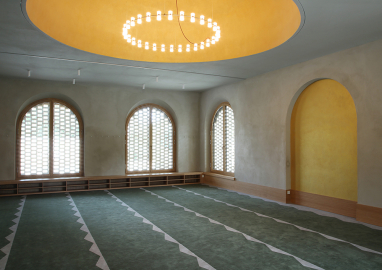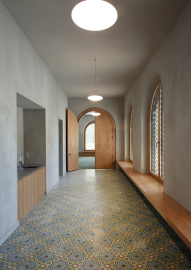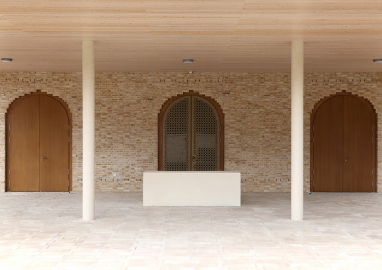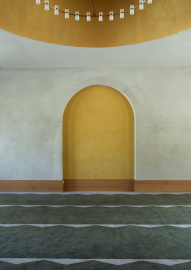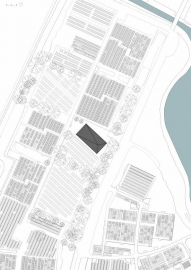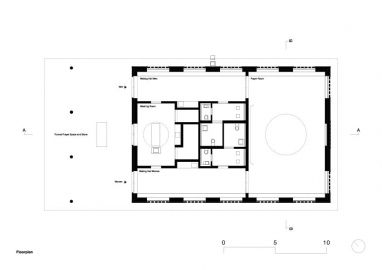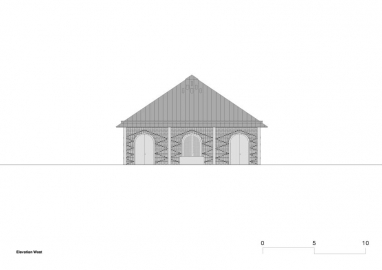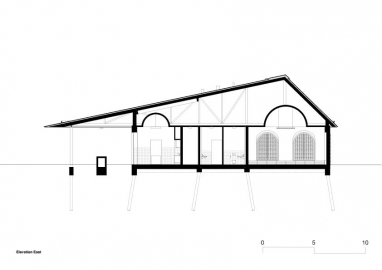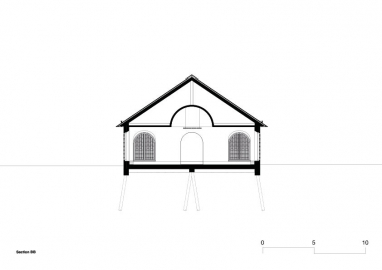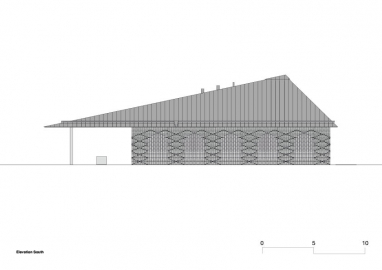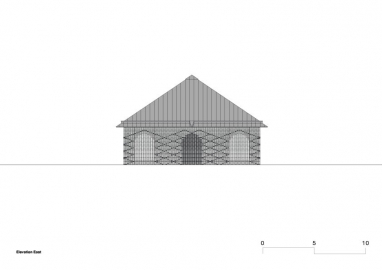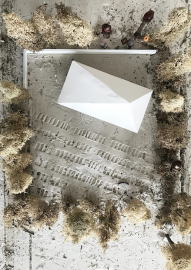Muslim Burial and Prayer House
A Muslim burial ground together with a house for prayers and burial rituals was added to Finkenriek cemetery in Hamburg. The mutual vision was to create a new space of modest nature representative of the Islamic culture. The worthy atmosphere of the house should combine the “Hanseatic” as well as the “Muslim” tradition of building culture.
The cemetery marks the southern end of a green area in the multicultural urban quarter of Wilhelmsburg. The detached house is located in the midst of the cemetery surrounded by a variety of old and large trees. The burial grounds as well as the house are oriented in the direction of prayer towards Mecca. The building is a compact single-storey solid construction that unites all functions efficiently under a large pavilion roof: a mortuary and washing room, a prayer room, two separated entrances and waiting rooms with bathrooms for female and male and finally a covered area dedicated to prayers for rites of passage with a massive stone for the dead. The concept for the building has been developed in a participatory process together with local Imams as representatives of local Muslim communities.
The challenge at the early stage was to develop a house that fits within the small size of the site, the low budget of the clients and to find a suitable architectural language and atmosphere for a house that would be open to all different local Muslim communities.
Participatory workshops during the design process helped to make decisions about the relevant spatial and representational elements. One early design decision was made, that the house should be close to nature, build with natural materials that connect with the earth. Symbolic elements and ornaments should be minimal. The reduced design approach gives space to practice one's own understanding of Islam. Further, in the outdoors, a wall should frame on two sides the roofed entrance space to create the necessary privacy during the funeral praying. At a later stage, the challenge during the construction was to work with builders of low knowledge in traditional brick and plaster works and still achieve good quality in the realization of details and surfaces- especially the ornamental patterns of the brick facade, and the natural lime plaster on the walls was finally built well.
The design refers to stone and brick constructions of the traditional Islamic and Hanseatic architecture. It is a solid building with a two-layered massive wall consisting of an inner sand-lime brick wall combined with reinforced concrete steel elements as the main supporting structure and an outer facade with a sandstone coloured brick wall that contains ornaments and openings to filter light and sight to create privacy. The roof is a wooden truss-construction covered with zinc sheet with a patina that will finally develop during the times and exposure to the climate.
Materials in the interior are simple but of good quality like lime plaster for the walls and handmade ornamental cement tiles. The doors and windows are made of oiled oak. The carpet in the prayer room is specially designed and mark the rows for prayers. A large curtain in the prayer room has an acoustical function and can divide the space for female and male prayers.

